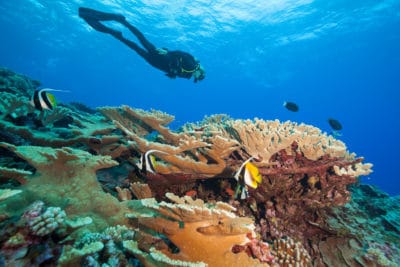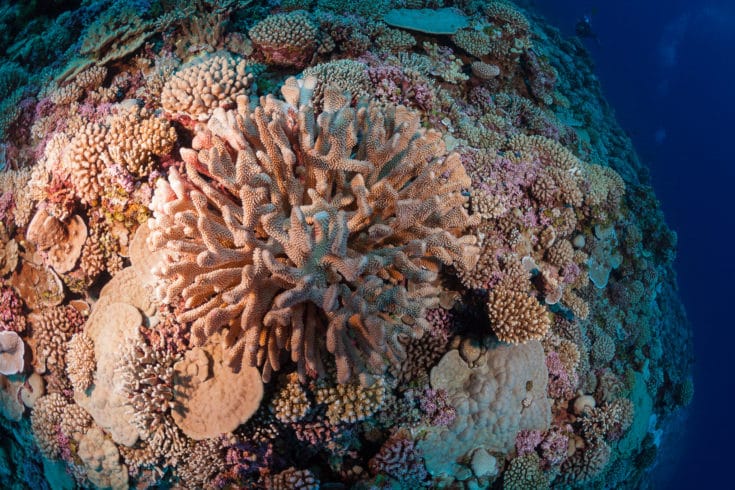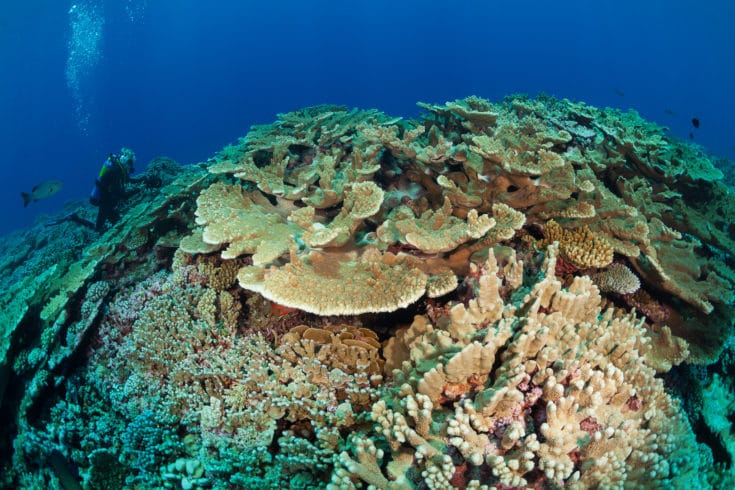
On our Global Reef Expedition mission to French Polynesia, we had the chance to study many remote coral reefs, some of which had never been surveyed by scientists before. But of all the reefs we surveyed in French Polynesia, the reefs in Gambier Archipelago stand out as truly spectacular and had some of the highest coral cover we found on the entire Global Reef Expedition. The reef communities of the remote atolls of the Acteon Group in Gambier often had 50-90% live coral cover extending from just below the water’s surface to over 30 meters depth. This type of coral cover is unprecedented for the South Pacific, and we were thrilled to witness these thriving reefs.
Coral cover is the recorded proportion of the seafloor that is covered by live stony coral. It is important because live coral cover is not only an indicator of reef resilience, the structure and complexity of the reefscape provides critical habitat for many different species of fish and invertebrates. Generally speaking, the more coral there is, the more habitat is available for animals that live in or on the reef.
I have been diving all over the world, and the sites located at the Gambier Archipelago had some of the most spectacular coral fields I have ever seen. From site to site, different species of coral were dominant. As far as the eye could see there were branching staghorn coral thickets (Acropora) and large massive corals that look like giant boulders (Porites). On the steeper reef slopes, we found beautiful large flower-like (foliaceous) colonies (Montipora). It was unbelievable—the entire bottom of the ocean was carpeted with corals.

The Gambier Archipelago exhibited extraordinary coral reef communities. The percent coral cover was not only the highest observed by KSLOF in French

Even though we were only able to capture a snapshot in time of what the coral cover was like in Gambier when we surveyed these reefs while on the Global Reef Expedition in 2013, we achieved our goal of collecting baseline data for some of the most remote reefs in the world. Baseline data is important because coral reefs are under tremendous
All images: ©Michele Westmorland/iLCP.